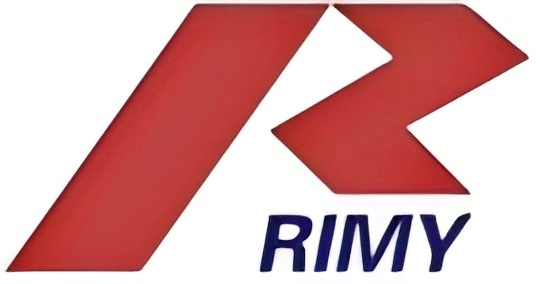Revolutionizing Electric Motor Manufacturing Through Automation
The electric motor manufacturing industry is experiencing a transformative shift with the integration of automatic stator winding machines. These sophisticated systems are redefining production efficiency, quality standards, and return on investment metrics across the sector. As manufacturers face increasing pressure to optimize operations and reduce costs, the automatic stator winding machine emerges as a game-changing solution that promises to deliver substantial returns within a remarkably short timeframe.
Modern automatic stator winding machines represent a significant leap forward from traditional manual winding processes. By combining precision engineering with advanced automation technology, these machines not only accelerate production speeds but also ensure consistent quality that human operators simply cannot match. The impact on operational efficiency and bottom-line results has become increasingly evident, making them an attractive investment for manufacturers of all sizes.
Understanding the Financial Impact of Automated Winding Systems
Direct Cost Savings Through Labor Optimization
One of the most immediate and substantial benefits of implementing an automatic stator winding machine is the dramatic reduction in labor costs. Traditional manual winding operations typically require multiple skilled operators working in shifts to maintain production levels. By transitioning to automation, manufacturers can reallocate their workforce to more strategic tasks while maintaining or even increasing output levels.
The labor cost savings extend beyond basic wage considerations. Training costs, overtime expenses, and benefits packages for multiple operators are significantly reduced. Additionally, the elimination of human error in the winding process leads to fewer rejected units and rework requirements, further contributing to cost efficiency.
Quality Improvements and Scrap Reduction
The precision and consistency offered by an automatic stator winding machine directly translate to superior product quality. These systems maintain exact wire tension, precise slot filling, and perfect end turns throughout the entire production run. This level of consistency is virtually impossible to achieve with manual winding methods.
The improved quality control leads to a substantial reduction in scrap rates, typically dropping from 5-8% in manual operations to less than 1% with automated systems. When calculating ROI, this reduction in material waste and rejected units represents a significant cost saving that compounds over time.
Productivity Enhancements and Output Optimization
Increased Production Speed and Throughput
The speed advantage of an automatic stator winding machine is remarkable, with most modern systems capable of completing complex winding patterns in a fraction of the time required for manual operations. This increased speed translates directly to higher production capacity, allowing manufacturers to meet growing demand without expanding their physical footprint.
Furthermore, automated systems can operate continuously with minimal downtime, requiring only routine maintenance breaks. This consistent operation results in predictable output levels and better production planning capabilities, enabling manufacturers to optimize their entire production schedule.
Reduced Setup and Changeover Times
Modern automatic stator winding machines feature advanced programming capabilities that dramatically reduce setup and changeover times between different stator configurations. What once took hours of manual adjustment can now be accomplished in minutes through digital controls and stored programs.
This flexibility allows manufacturers to respond quickly to varying customer demands and run smaller batch sizes efficiently. The reduction in setup time not only increases overall productivity but also enables more agile production scheduling and improved customer responsiveness.
Long-term Strategic Advantages
Market Competitiveness and Customer Satisfaction
Investing in an automatic stator winding machine positions manufacturers to compete more effectively in an increasingly demanding market. The consistent quality and reliability of automated production translate directly to improved customer satisfaction and stronger business relationships.
The ability to maintain tight tolerances and produce identical units consistently also opens opportunities in high-precision markets, such as aerospace and medical equipment, where quality standards are particularly stringent. This market expansion potential represents additional revenue opportunities that contribute to the overall return on investment.
Future-Proofing Manufacturing Operations
As industry standards continue to evolve and labor costs rise, automated manufacturing becomes increasingly essential for long-term sustainability. An automatic stator winding machine represents not just a current solution but an investment in future capabilities and competitiveness.
The integration of Industry 4.0 features in modern winding systems, including data collection and analysis capabilities, positions manufacturers to benefit from continuous process improvement and predictive maintenance strategies. These advanced features ensure the investment continues to deliver value well beyond the initial payback period.
Frequently Asked Questions
How does maintenance cost factor into the ROI calculation?
Maintenance costs for an automatic stator winding machine typically represent 2-3% of the initial investment annually. This includes routine maintenance, periodic parts replacement, and preventive service. However, these costs are often offset by the reduction in production errors and improved efficiency, making them a minor factor in the overall ROI calculation.
What training is required for operators of automatic winding machines?
Operator training usually requires 1-2 weeks for basic operation and program management. Most manufacturers provide comprehensive training packages with their machines, including ongoing support and advanced training options. The learning curve is significantly shorter than training manual winding operators, and the skills are more transferable across different machine types.
Can existing production lines be easily integrated with new automatic winding systems?
Modern automatic stator winding machines are designed with flexibility in mind and can typically be integrated into existing production lines with minimal disruption. Most systems offer modular designs and standardized interfaces that facilitate integration with current processes and equipment. Manufacturers often provide integration support and customization options to ensure smooth implementation.

